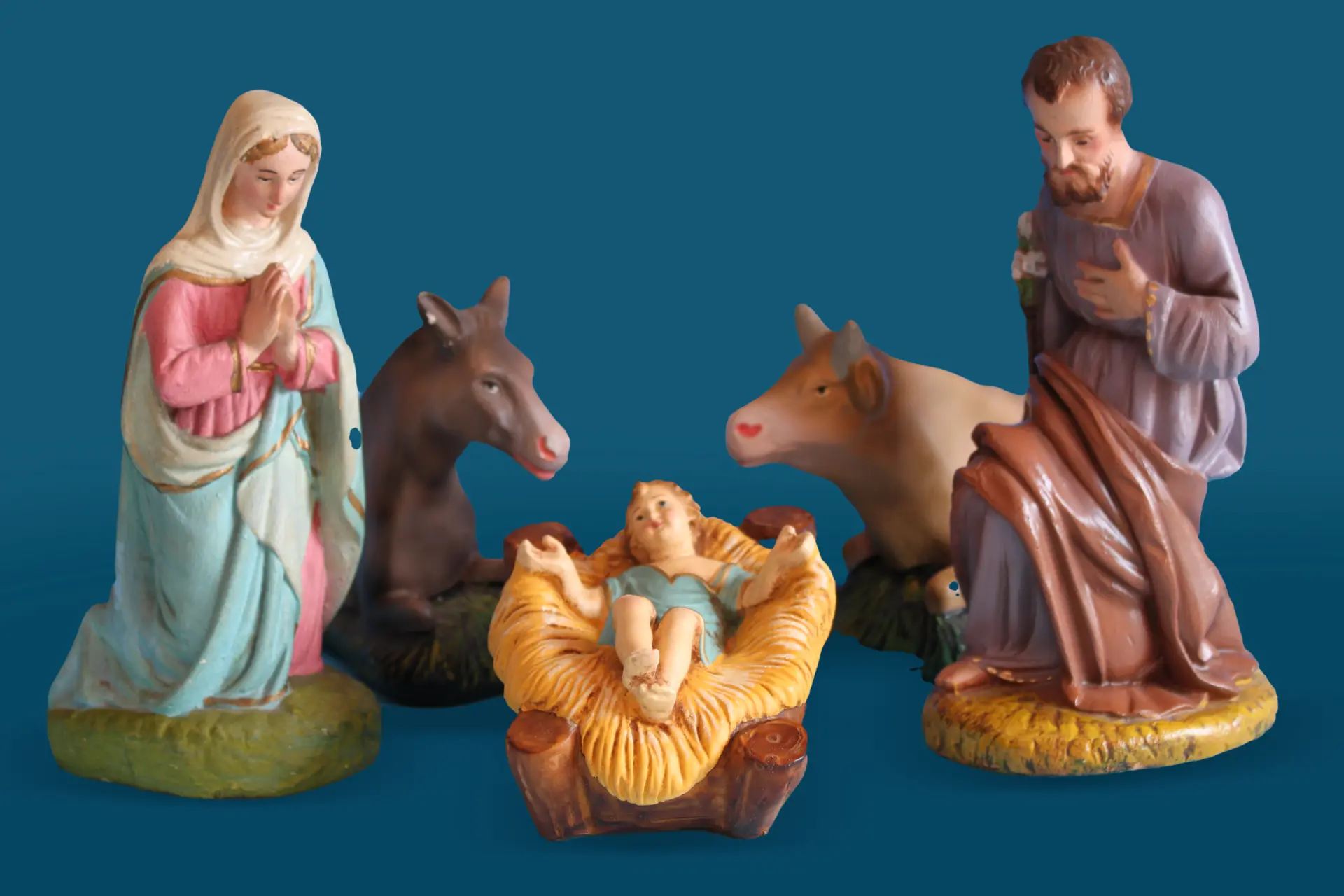The birth of the nativity scene in Italy is traced back to the re-enactment of Christmas set up by St. Francis in Greccio on the night of December 24, 1223. In fact, the representation of the Nativity already finds a place in early Christian art with pictorial, mosaic and bas-relief appresentations. The first two images of the Christ Child are from shortly after the year 200 and are found in Rome within the catacombs: one shows the enthroned Madonna holding the infant Jesus, the other is an adoration of the Magi, a typical crib iconography.
In numerous sarcophagi, moreover, Jesus is portrayed swaddled and lying in a manger between the protruding snouts of a donkey and an ox, as in the famous sarcophagus of Stilicho in the basilica of Sant’Ambrogio in Milan.
During the Middle Ages, between the 13th and 14th centuries, great artists such as Nicola Pisano and Giotto dealt with the theme of the Nativity.
The same period saw the birth of the nativity scene with mobile statues in the round, such as the one by Arnolfo di Cambio in Rome’s Basilica of Santa Maria Maggiore, consisting of eight statues carved in marble, or the one in the church of Santo Stefano in Bologna, made of wood.
From this time on, the history of the full-length nativity scene follows its own path with respect to nativity figurations: a path made by names, including illustrious ones, from art history with sculptural groups placed in important churches and shrines. Beginning in the seventeenth century, thanks in part to the strong emotional component involved in the Nativity theme, the nativity scene became an object of worship and soon took on a popular character by spreading to homes.
In Italy, Tuscany is one of the first centers of dissemination, followed by the Kingdom of Naples and, more generally, the southern regions. The central and northern regions will follow.
The compositions were enriched with characters and scenes, soon revealing the flair and imagination of the artists who created them and becoming a faithful mirror of the customs and traditions of the time and place in which they were created.
On the threshold of the nineteenth century, the nativity scene, having definitely moved out of purely ecclesiastical and aristocratic circles, began to take on popular connotations and characters. It then becomes a ritual domestic object and also enters the homes of less affluent families, both in the city and in the countryside.

